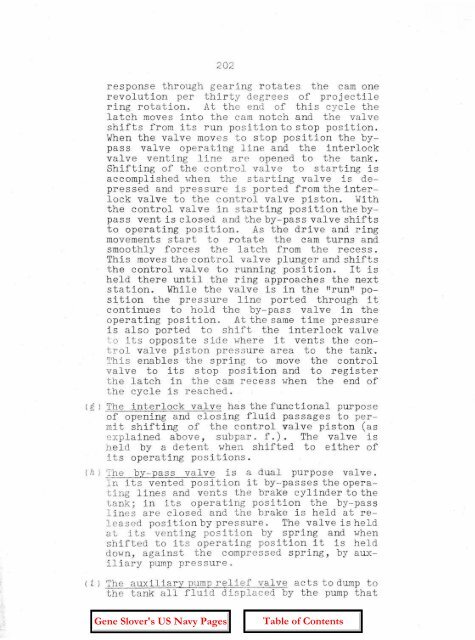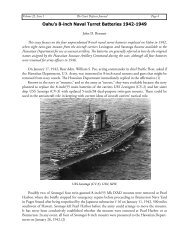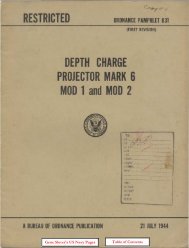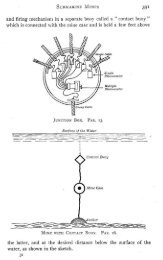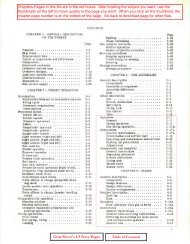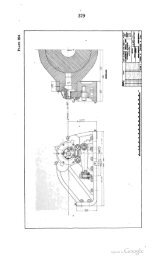OP-755 Part 2 Pages 197-401 - Personal Page of GENE SLOVER
OP-755 Part 2 Pages 197-401 - Personal Page of GENE SLOVER
OP-755 Part 2 Pages 197-401 - Personal Page of GENE SLOVER
You also want an ePaper? Increase the reach of your titles
YUMPU automatically turns print PDFs into web optimized ePapers that Google loves.
202<br />
response through gearing rotates the cam one<br />
revolution per thirty degrees <strong>of</strong> projectile<br />
ring rotation. At the end <strong>of</strong> this cycle the<br />
la tch moves into the cam notch and the valve<br />
shifts from its run position to stop position.<br />
When the valve moves to stop position the bypas<br />
s valve operating line and the interlock<br />
valve venting line are opened to the tank.<br />
Shifting <strong>of</strong> the control valve to starting is<br />
accomplished when the starting valve is depressed<br />
and pressure is ported from the interlock<br />
valve to the control valve piston. With<br />
the control valve in starting position the bypass<br />
vent is closed and the by-pass valve shifts<br />
to operating position. As the drive and ring<br />
movements start to rotate the cam turns and<br />
smoothly forces the latch from the recess.<br />
This moves the control valve plunger and shifts<br />
the control valve to running position. It is<br />
held there until the ring approaches the next<br />
station. While the valve is in the "run" posi<br />
tion the pres sure line ported through it<br />
continues to hold the by-pass valve in the<br />
operating position. At the same time pressure<br />
is also ported to shift the interlock valve<br />
to its opposite side where it vents the control<br />
valve piston pressure area to the tank.<br />
This enables the spring to move the control<br />
valve to its stop position and to register<br />
the latch in the cam recess when the end <strong>of</strong><br />
the cycle is reached.<br />
(g ) The interlock valve has the functional purpose<br />
<strong>of</strong> opening and closing fluid passages to permi<br />
t shifting <strong>of</strong> the control valve piston (as<br />
expla1ned above, subpar. f.). The valve is<br />
held by a detent when sh1fted to either <strong>of</strong><br />
its operating positions.<br />
(h) The by-pass valve is a dual purpose valve.<br />
In its vented position it by-pas ses the operat:Lng<br />
lines and vents the brake cylinder to the<br />
tank; in its operating position the by-pass<br />
lines are closed and the brake is held at released<br />
position by pressure. The valve is held<br />
at its verrt i.ng position by spring and when<br />
shifted to i ts operating position it is held<br />
down, against the compressed spring, by auxiliary<br />
pump pressure.<br />
(i) The auxiliary pumprelief valve acts to dump to<br />
the tank all fluid displaced by the pump that


